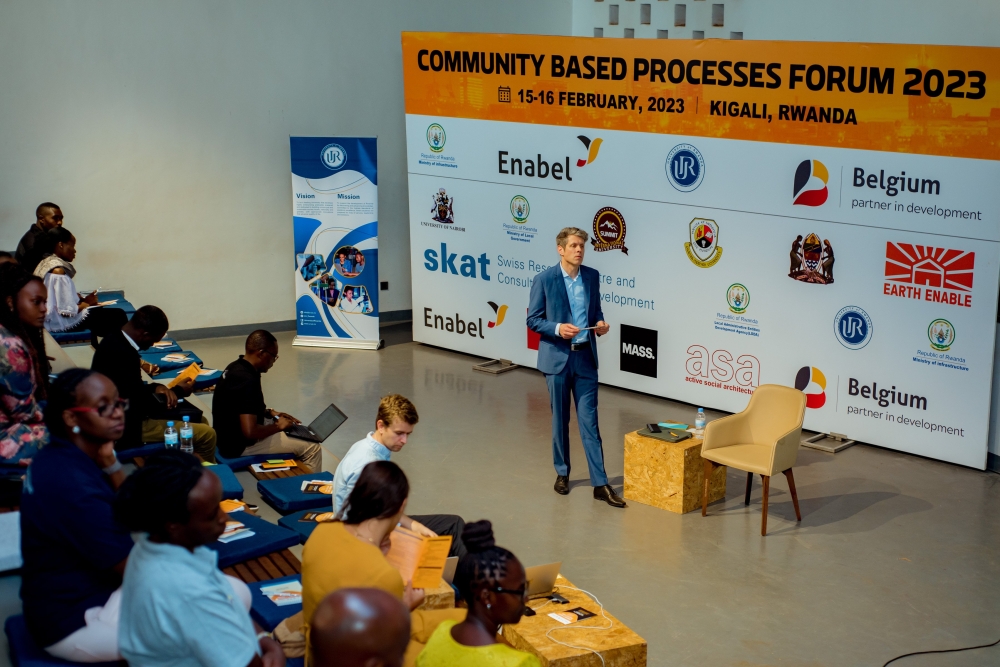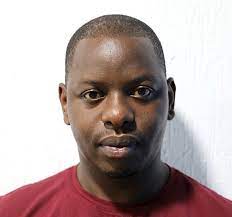

The ministry of infrastructure has tasked architects in Rwanda to work closely with communities in incorporating climate resilience apparatuses in construction project design and implementation.
ALSO READ: What would it take to have more green buildings in Kigali
The call was made during the Forum on Community-Based Processes for Climate Resilient Design.
The forum discussed the principle of engaging the community in construction and urbanism projects, for them to develop and take ownership.
The initiative funded by Enabel-a Belgian development agency- brought together participants from Rwanda’s Ministry of Infrastructure, University of Rwanda, Uganda Martyrs University, Rwanda Housing Authority as well as Architecture students from Rwanda, Burundi, Kenya, Uganda.
Eddie Kyaze, the Director General in charge of urbanization at the ministry of infrastructure said that there is a need for changes as there have been setbacks in engaging the community in incorporating climate resilience in infrastructure projects.
ALSO READ: Rwanda eyes $1m to promote green building technologies
"For us at the Ministry of Infrastructure, working with communities in project design and implementation has increasingly become inevitable than before.
With the new requirements to incorporate green and climate resilience in all projects, local traditional knowledge is now becoming the norm. We have had so many setbacks and hence learned lots of lessons across various infrastructure projects which ignored the role of community in planning, design, and implementation,” he said.
He said that a lack of community engagement could derail efforts to achieve sustainable development goals.
"The role of the community in driving the implementation of SDGs, especially through the relevant infrastructure development projects and programs can never be underestimated. Without Community at the centre of all these projects, activities, and interventions; achieving sustainable development will just be a dream – urbanism,” he said.
He noted that the government has been very critical in this initiative, especially building from the famous community work "Umuganda” and the development of basic infrastructure commonly called Ubudehe.
ALSO READ: Johannesburg emulates Rwanda&039;s clean-up campaign
"Involvement of all stakeholders should be sought throughout all phases of the community-driven project cycle,” he said, adding that there is a need for capacity building of community-based organizations.
He said community access to resources should be governed by simple rules and procedures that are easy for communities to interpret and apply.
"Explicit gender-sensitive approaches are needed to ensure that CDPs incorporate the interests of groups that are often excluded, including women, youth, and the poorest women and men,” Kyaze said.
Ignace Gatare, the Principal of College of Science and technology said that the practice of "community-based processes" is such a significant approach to dealing with complex problems especially in urbanizing environments to respond to community needs.
"This further plays a significant role in nurturing ownership,” he said.
He said that climate-responsive design is expected to contribute to the achievement of SDG, particularly Goal 9 (Industry, Innovation, and Infrastructure), Goal 10 (Reduced inequalities, Goal 11 (Sustainable Cities and Communities), and Goal 13 (Climate Action).
Mattias Piani, Intervention Manager on an Urbanization and Economic Development project in Rwanda for Enabel said that the community has knowledge that can guide architects in incorporating climate resilience in construction projects.
"When we speak about climate responsive design and climate change, we are speaking about communities that are impacted by climate change. There is no way to work out to address the challenge without engaging the community that is impacted by climate change,” he said.
He said that architects should learn about the evolution of the environment together with the community.


